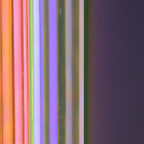Alice Taylor
By Hand & Brain
[Alice had slightly different questions to the other contributors, related to her work at MakieLab.]
MakieLab’s one thing is about making 3D printed toys from digital stuff: games, apps, other toys even. We believe in making pretend real, having fun and trying to be as sustainable as possible, too.
We hijacked “making” into MAKIE, to describe both our back end stuff, and the people who like to play with stuff. We reckon our early adopters and customers will be makers and crafters: people who want to make a toy, and personalise how it looks. Kids too, but first we have to iron out the wrinkles in the tech and the toy safety aspects, and get the price down before kids can get stuck in. [Makies became available for kids since this was written in 2012.]
Making is three things: satisfying (I did it!) social (Look what I made!), and incredibly hard to do well (How the hell..?) Plus, once the knowledge of how to make something is lost, you really do have to start from scratch again, rebuild it. Maybe faster second time round, but something is lost, you really do have to start from scratch again, rebuild it. Maybe faster second time round, but maybe more expensively, too.
It needs a clever German word to describe the internal warmth in the belly when you look at a thing you did well that’s going to last quite a long time, and think, “someone (I love) made that”. There’s a tiny weeny sense of […] immortality in making something, I think. I can see things people have made or that I have made, physical things, and think, that’ll still be there in 10/100/300 years.
Digital things are far more temporal, transitive; all my digital creations from pre 2000 have disappeared, gone, never to be seen again. That’s a weird feeling.
Play is Learning; Making is Doing, put the two together and you Learn how to Do.
We’re making toys from games, and games into toys — literally, avatars into dolls, game furniture into doll houses, avatar shoes into doll shoes, and dolls that talk back to games, so…it’s all intertwined.
I don’t know if they have to coexist, you can remove Play and still Learn how to Do, if you have tons of discipline and education. See Germany and its manufacturing; or China’s rapid growth in the same. In Western culture, I think in fact discipline has produced more than a playful approach, in physical manufacturing but the opposite is probably true in digital and content production. Creativity feeds on failures, experiments, mashups, mixing, remixing and Western cultures seem to be very good at creativity. Constant iteration. Perhaps making and manufacture requires reliability, solidity, performance, and practise, millions of hours of practise: once you’ve practised something for a million hours, you’re probably less inclined to change that process.
Can playfulness and rapid iteration be brought to manufacture? We think so, but only with technologies like 3D printing and customisable paper printing, and even then that’s only a tiny bit of the manufacturing process.
Code is crafted, every time. And half the time you can see the signature style of the writer. Who is, of course, an artist. It’ll be manufactured once code write itself, of course. Haha. Looking forward to that day. But, for now, the artists we call coders are programmers, and it's called Programming, and that's a subset of Technology. (I fought for years to get the BBC to list video games reviews under CULTURE instead of TECHNOLOGY, but 8 years later, pretty sure they’re still under Tech.)
I don’t think at all that you have to have a physical thing to be a crafter or a maker, but it’s what people will expect in hearing the descriptor.
By Alice Taylor.
This is part of By Hand & Brain, an essay by 7 people.
Next: Bruce Sterling
